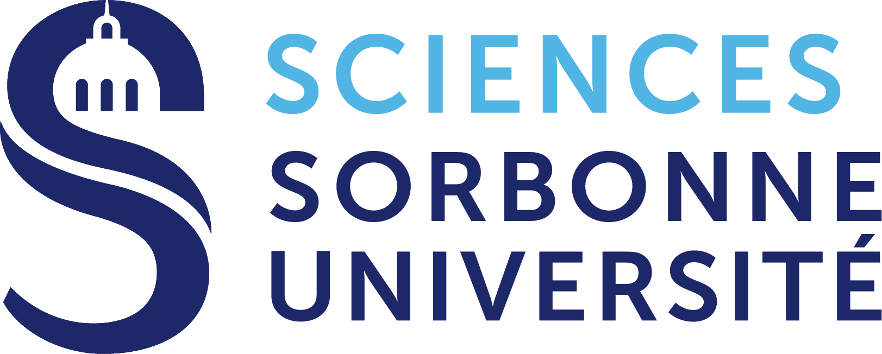- SIte SU de Infrastructure de Recherche SLICES-FR (Scientific Large Scale Infrastructure for Computing/Communication ExperimentalStudies – France) pour expérimenter toute nouvelle approche logicielle et/ou matérielle sur l’ensemble du continuum IoT/réseaux/edge/cloud permettant une vision holistique sur l’ensemble de la chaine de la donnée, de sa captation à son traitement en passant par son transport et son stockage. (2025-...).SLICES-FR est régie par un GIS (Groupement d’intérêt Scientifique) qui réunit aujourd’hui la majorité des acteurs académiques français du monde des réseaux et systèmes distribués :
- CEA
- CNRS
- Inria
- Institut Mines Télécom
- Université Grenoble Alpes
- Université de Lille
- Université de Lorraine
- Université de Rennes
- INSA Lyon
- EURECOM
- Nantes Université
- RENATER
- Université de Strasbourg
- Université de Toulouse
- ENS Lyon
- Sorbonne Université
- Programme ciblé NF-Plateforme XG du PEPR Réseaux du futur pour la mise en place d'infrastructures de recherche à l'échelle nationale pour tester de nouveaux composants matériels ou logiciels et évaluer les paradigmes de la prochaine génération de réseaux de télécommunications (2023-2027). Partenariat :
- CNRS,
- Institut Mines Télécom,
- INRIA Sophia
- Eurecom,
- Université de Bordeaux,
- Université de Lille,
- Université de Rennes,
- INSA Lyon,
- Université de Brest
- Edge-Net (https://www.edge-net.org/), the globally distributed edge cloud for Internet researchers, is based on industry-standard Cloud software, using Docker for containerization and Kubernetes for deployment and node management. The EdgeNet control plane is operated by the Dioptra group at Sorbonne University, which also runs PlanetLab Europe. Partners :
- Donation VMware pour le développement de la plateforme EdgeNet et l'education autour des technologies Kubernetes avec Timur Friedman (2021-2022)
- Cartographie de l'Internet avec Timur Friedman (2016-2020 + 2020-2024 + 2025...) : Mise en place d'un système de mesure et analyse de la topologie de l'Internet. Utilisation des infrastructures de mesures PlanetLab Europe et EdgeNet
- Probabilist Graphic Model for P2P-TV Users Behavior Analysis (2016) : Analysis of multi-channel P2P-TV traces with bayesian networks (LIP6 project with P.-H. Wuillemin)
- FP7 ICT Project FORGE (2013/2016): Forging Online Education through FIRE (FORGE) is a project bringing the FIRE and eLearning worlds together. FORGE will align FIRE (Future Internet Research and Experimentation) with the ongoing education revolution. This project will specify development methodologies and best practices for offering FIRE experimentation facilities to learners and to the learning community in general. Partners :
- The Open University
(coordinator),
- University of Patras
- iMinds (formerly known as IBBT),
- GRNET (Greek Research and Technology Network),
- NICTA (National ICT Australia)
- Trinity College Dublin
- Analysis of multichannel P2P-TV delivery (2015) : Analysis of Multi-channel P2P-TV traces (LIP6 project with F. Tarissan)
- Behavior Modelisation of P2P-TV Users (2013) : Measurment and analysis of channel switching of P2P-TV users (LIP6 project with S. Tixeuil, T. Artières and B. Amann)
- P2P-TV-Zap (2011), P2P-TV-Zap++ (2012): Measurement and analysis of user-driven transient states in P2P-TV systems (LTCI-LIP6 project with D. Rossi).This work was done in collaboration with T. Miyoshi (Shibaura Institute of Technology, Tokyo).
- FP6 IST Network of Excellence CONTENT
(2006/2009): Targets a
key area of Information Society Technologies, namely
Content Delivery Networks for Home Users, as an integral
part of Networked Audio-Visual Systems and Home Platforms.
Partners :
- Univ. Carlos III de Madrid
(coordinator)
- Univ. Politecnica de Catalunya
- Lancaster University
- Univ. de Coimbra
- National
and Kapodistrian Univ. of Athens
- Techical Univ. Darmstadt
- AGH (Cracow)
- Univ. iOslo
- Techical Univ. Delft
- CINI/Univ. Napoli
- P2P Streaming (2005/2006): Live streaming consists in
broadcasting an infinite amount of data with time and quality
constraints to a group of users. Native internet services cannot
deal with this kind of data and the numerous IP extensions
proposed for this task are not widely available. Our proposition
is to use the P2P model to introduce the desired services
(LIP6 project with L. Arantes, B. Le Grand and N.
Malouch)


